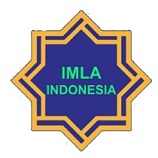ARAB SPRING: PERUBAHAN REZIM DAN TEGANGAN HUBUNGAN AS – DUNIA ARAB REFLEKSI SOSIO-HISTORIS
Abstract
The revolutions in the Arab World such as Egypt, Tunisia, Marocco, Libya, Syria
and Yemen have affected political landscapes in the Middle East countries. Revolutions
in the MENA countries have broken up relations between the Arab World and the US.
The revolutions also have paved the way for Islamic groups to put political pressures to
take power . Moreover, the Arab Spring have the influence over changes in the United
States foreign policy in Middle East.
But, up to now, it is not clear that the revolution in the Middle East in 2011 is a
great opportunity for the U.S. to increase its role in countries. It's not clear too, whether
or not it also a new opportunity for the U.S. to establish strategic alliances in Arabic
World.
While Washington was surprised by the fall of the regimes of Egypt and Tunisia,
for instance, there is uncertainty that the two countries would be the new alliances of
the US in the near future.
America has lost its loyalists such as former Egyptian President Hosni Mubarak
and Ben Ali, Tunis. But at the same time, the proximity of the the US-Gulf alliances is
increasing, especially with Saudi Arabia,Bahrain, Kuwait and Qatar . Washington for a
while is still groping, if not frenzy, in rebuilding the present relationship with the Middle
East, as long as the MENA countries are still in the era of transition. The U.S and the
West are aware about that problem, and they understand that in the Middle East the
political uncertainty is so apparently.
and Yemen have affected political landscapes in the Middle East countries. Revolutions
in the MENA countries have broken up relations between the Arab World and the US.
The revolutions also have paved the way for Islamic groups to put political pressures to
take power . Moreover, the Arab Spring have the influence over changes in the United
States foreign policy in Middle East.
But, up to now, it is not clear that the revolution in the Middle East in 2011 is a
great opportunity for the U.S. to increase its role in countries. It's not clear too, whether
or not it also a new opportunity for the U.S. to establish strategic alliances in Arabic
World.
While Washington was surprised by the fall of the regimes of Egypt and Tunisia,
for instance, there is uncertainty that the two countries would be the new alliances of
the US in the near future.
America has lost its loyalists such as former Egyptian President Hosni Mubarak
and Ben Ali, Tunis. But at the same time, the proximity of the the US-Gulf alliances is
increasing, especially with Saudi Arabia,Bahrain, Kuwait and Qatar . Washington for a
while is still groping, if not frenzy, in rebuilding the present relationship with the Middle
East, as long as the MENA countries are still in the era of transition. The U.S and the
West are aware about that problem, and they understand that in the Middle East the
political uncertainty is so apparently.
Keywords
Middle East, Arab World, Revolutions.
Full Text:
PDFDOI: https://doi.org/10.20961/cmes.6.1.11686
Refbacks
- There are currently no refbacks.
Copyright (c) 2017 Jurnal CMES
| Copyright of CMES ISSN 2085-563X (print) and ISSN 2502-1044 (online) CMES Journal is licensed under a Creative Commons Attribution-ShareAlike 4.0 International License. | CMES (Center of Middle Eastern Studies) Print ISSN: 2085-563X Online ISSN: 2502-1044 Website: https://jurnal.uns.ac.id/cmes/index Email: cmes@mail.uns.ac.id Published by: Universitas Sebelas Maret Office: Department of Arabic Literature, Faculty of Cultural Science, Universitas Sebelas Maret Ir. Sutami Street, No. 36A, Surakarta, Jawa Tengah 57126 Phone: +62 822-4000-2313 |















